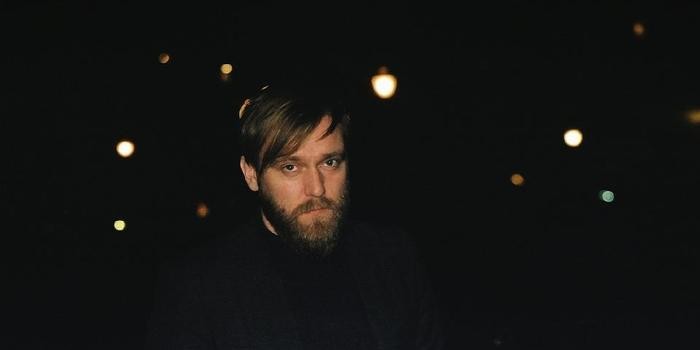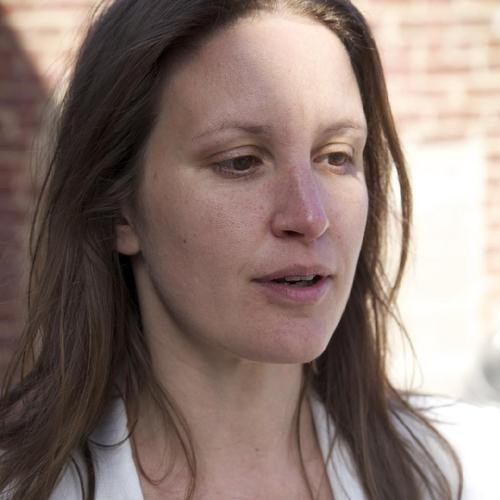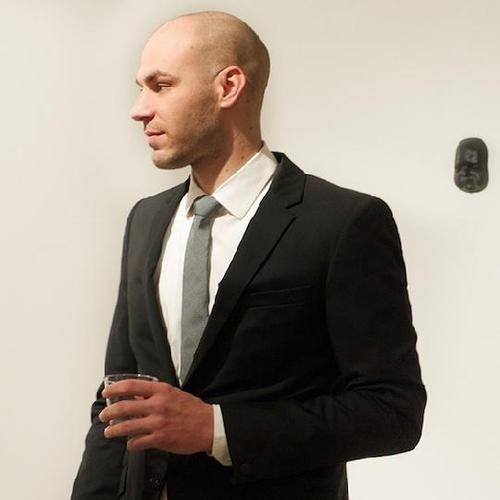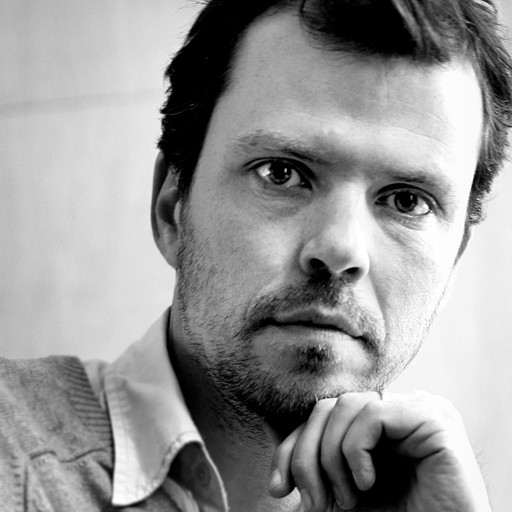Outside the Chinese city of Hangzhou an otherworldly replica of Paris is being built, with versions of the Eiffel Tower, the Champs-Élysée, and other famous landmarks being recreated at smaller scale. Much of the city is half-constructed, and within eyeshot of immaculate wholesale architectural reproductions are weedy patches of barren land. This strange architectural fantasia bridging East and West, true-to-life and ersatz, is the subject of the artist Jesper Just’s new multi-channel film installation at the Venice Biennale’s Danish Pavilion.
Telling the intertwined stories of three men traversing the mini-city, the film is spread across five screens of varying size that have been set within an architectural environment that Just created within and immediately surrounding the pavilion. The exhibition is also accompanied by a poster campaign done in collaboration with the design studio Project Projects that plasters stills from the film (see three below) across five urban locations in New York, Paris, Shanghai, Hong Kong, Copenhagen—heightening the sense of geographic displacement, and site-unspecificity.
To find out about the thinking behind the pavilion, Artspace editor-in-chief Andrew M. Goldstein spoke to Just about his fascination in China’s Paris manqué, and whether or not the show marks a new direction in his art.
At right find work by Jesper Just on Artspace, plus a selection from our Venice Biennale: National Pavilions collection.
What is the story behind this bizarre mini-city outside Hangzhou?
There are hundreds of these replica cities through China, some bigger than others. This was the most iconic one I found. It’s basically real-estate speculation rather than an homage to French culture. It’s still being constructed and eventually will house more than 100,000 residents. People I spoke to there didn't have a romantic notion of living in a replica city of Paris—they found it funny architecturally, but it wasn’t about Paris.
How did you first come across the city?
I was thinking about the strangeness of the Giardini—its mash of architectural signifiers, with each building meant to represent a nation. I started reading about imposturbanism, which is this idea of reconstructing pastiches of well-known cities in other parts of the world. Different cultures have always borrowed and appropriated architectural styles and even ambiances from one another, but the idea of reconstructing entire cityscapes is a more recent and perhaps somewhat different phenomenon. I thought it could be interesting to use a replica city as a location.

What is it that particularly draws you to this ersatz Paris?
I stumbled upon Palm Springs in China when I first started doing research at first and was going to use that, but since the real Palm Springs is a pastiche in itself, it was a pastiche of a pastiche. So I felt that it didn't really represent anything and therefore wouldn't be recognized as anything. I wanted to shoot in a replica city as if it was a representation of a city, using French actors, et cetera.
How much time did you spend in China while filming this piece? What was that experience like?
Five weeks. The people were very nice, especially the workers building the city. They were so hospitable, inviting us inside their container homes and sharing their food with us.
Hangzhou harmonizes subversively with the pavilions of the Giardini, which purport to exist as tiny satellites of the nations occupying them. Some see the very nature of the Biennale being divided into national pavilions as an outdated concept in a globalized, permeable-bordered world. Do you agree?
For me it’s been something to work with and against at the same time, so in that respect it has been useful. But the overall concept of national states might be old-fashioned.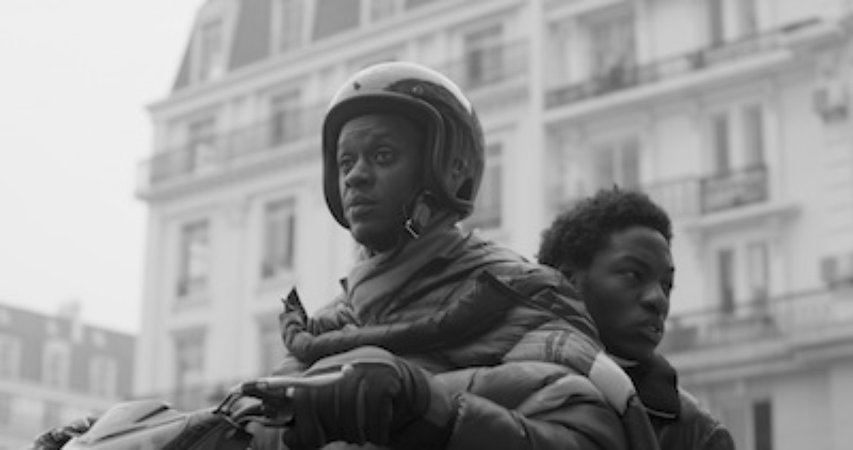
This year you are the official representative of Denmark, yet you live in Manhattan and often take temporary residence in other cities while pursuing your artistic career. Do you feel yourself to be authentically Danish?
Once you live abroad you get to understand the culture where you come from on a different level. It allows you to see it from a different viewpoint, there’s a clarity you get with some distance. But I still feel a certain peace when I am back in Denmark.
What filmmakers did you look to for inspiration when devising the look of this multi-channel film?
Truffaut.
Can you talk a bit about the plot that your three protagonists follow? How do they interact with the city?
Well, there’s not a plot. The city becomes a mediator—its buildings connect the three men on an intimate, or human, level.
Your pavilion seems to be, if not a departure from your earlier work, then a clear evolution beyond previous films of yours that tackled issues of masculinity through disorienting tactics lifted from the Hollywood cannon of such figures as David Lynch. Here, it seems, the protagonist of the overall work is not the actors but rather the strange city itself. Why did you decide to use the grand stage of Venice for such an ambitious step?
I don’t think that’s true really, that it’s such a departure. I think the location or the structure is always a starting point in my work and always a major protagonist. I’ve worked in the past with the phenomena of creative geography, a technique in cinema where you have a character and actor in one place and an action is carried out seamlessly while the location changes from one to another. The Danish Pavilion is actually two buildings fused together—the Neoclassical was built first, and the Modernist addition was added later. It’s kind of a creative geography in and of itself.
There are frequent outcries in the West about the Chinese "appropriation" of technology and intellectual property, like films and video games. One line of defense is that these disputes actually boil down to cultural differences, with Chinese nationals having a different viewpoint on originality—one reflected in the tradition of the country's artists "honoring the master" by painstakingly copying an earlier artist's work, or that of "preservationists" tearing down and replacing a historical site with a new copy rather than conserving the original. As a Western artist, what do you think of this Eastern approach?
Copying is a way of learning in China, and in the West even—when you’re learning to write you’re copying things. I think the recent surge in Chinese reproduction of Western lifestyles and residential areas is really interesting. Unlike the colonial situations where the French, the British, or the Dutch, for example, imported and forcefully exerted their lifestyles in Asia, one could argue that what we’re witnessing now is a situation where “the Other”—that is, the Chinese— suddenly takes over the role of cultural importer. The former “Other” is now willingly appropriating Western culture and doing so, perhaps, from a much more empowered position than ever before. They are the ones toying and experimenting with cultural signifiers that are not theirs to begin with—just like we in the West have historically appropriated pieces of other cultures for our own purposes.
Issues of originality, appropriation, and authenticity are all the subject of much discussion in the contemporary art world today. How would you feel if your "Intercourses" installation were to turn up as a copy in Hangzhou?
I’d have no problem with that.
As part of your pavilion you have created a parallel graphic campaign, executed out by New York design studio Project Projects, that will plaster stills from "Intercourses"—each stamped with an inverted and distorted Chinese character—in five foreign site. How did you conceive this project, and why was it important to expand your site-specific project into other locales?
The idea from the beginning was for a designer to come up with an experimental form of communication that would be a way for people who aren’t in Venice to experience the project. I chose Project Projects because I knew they could come up with something good. The posters are their domain, one of the elements of their graphic campaign.
The site-specific installation you created for your pavilion is as prominent as the multi-channel film itself, and as well as intricately constructing your pavilion, you have also made architectural interventions into the path visitors will take to enter it. Can you describe how you conceived the architecture to work with the film?
I wanted the exhibition experience to start when you approach the pavilion, so you experience it before you enter. I’m creating fragmentations of walls in concrete blocks all the way around the pavilion as a third architectural element. They’ll both guide the viewer and also suggest that behind these walls something is taking place. The original entrance to the pavilion was turned into the exit when the Modernist addition was built—I wanted to push that even further, and sideways. Now you’ll enter through a window and exit from the tool shed.
Venice, of course, is an enormous canvas on which to work, and creating a pavilion is a tremendous honor. What do you plan to do next?
Take a break and then we’ll see.
RELATED ARTICLES:
ART 101: How to Pronounce Artists' Names, Vol. 2
Massimiliano Gioni on His Venice Biennale Show, and "Trying to See More"
RELATED COLLECTIONS:
Venice Biennale: National Pavilions Collection
Venice Biennale: "The Encyclopedic Palace" Collection
Venice Biennale: Museum Shows Collection











